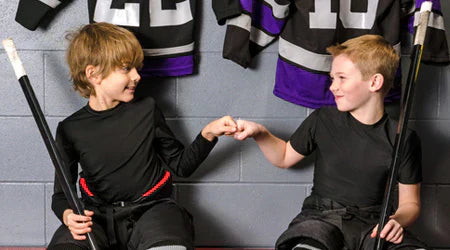One of the hardest things to figure out as a coach is getting line combinations with the right chemistry. There are some player combinations that are like oil and water, while others are just instant fit. It’s a process and you have to have a lot of patience, as it can take awhile.
Two years ago, I was coaching a Peewee team here in Minnesota (aka 12U for the rest of country). My players consisted of all forwards; not one player on the team had defense as their preferred position. Not an easy problem to solve. Defense seemed like a demotion in the eyes of the players, since everyone wanted to score the goals. Not an easy challenge to over come.
At the beginning of the season player/parent/coach meeting, I had to provide total transparency to the group. I told them that every athlete was going to have a rotation at “D” until I observed what combinations made us the best hockey team.
It was a long process, as we didn’t have the final line-up determined until the end of January, a couple weeks before our district tournament started. There were some ugly games along the way, but we pressed forward, trusting that each line that didn't gel was another combination that didn’t work, and were getting closer to nailing.
Then it all started to come together in parts; one line of forwards just connected with each other, so we kept them together. Then a set of defensemen played great together. Then we worked on getting another line locked down and we continued this process till we agreed that this was the combination’s that made us the best team. We went on to take second in the State Tournament, losing to a phenomenal Edina team.
The point is this: it takes a long time in order to get your line-up set for playoff hockey. And even then, coaches have to make adjustments mid-game due to penalties, injuries or lines just playing flat. Players have to realize that they can never be married to a position; they're not just forwards or defenseman...they’re hockey players.
One last suggestion to consider. Here in Minnesota, there can be up to three birth years playing on the same team. If you have a number of first year players on the squad, try pairing someone who is struggling with an one of the older players. With the extra year of experience the second year player can do more of the heavy lifting, which then opens up time and space for the first year player. Being the first forechecker on the puck, winning battles in the corner, allowing the first year to get used to the pace and added size of the older players.
That’s all I got for now. Thanks for reading it and have a great season!!
- Coach Lance
Edited in February 2025 from an original article written by Lance Pitlick in 2014. Based in the Minneapolis area, Lance is a former NHL player with Ottawa Senators and Florida Panthers, played collegiate hockey with the Minnesota Golden Gophers, is a top hockey training professional both in-person and through onlinehockeytraining.com, and is the founder and former owner of Snipers Edge Hockey.


